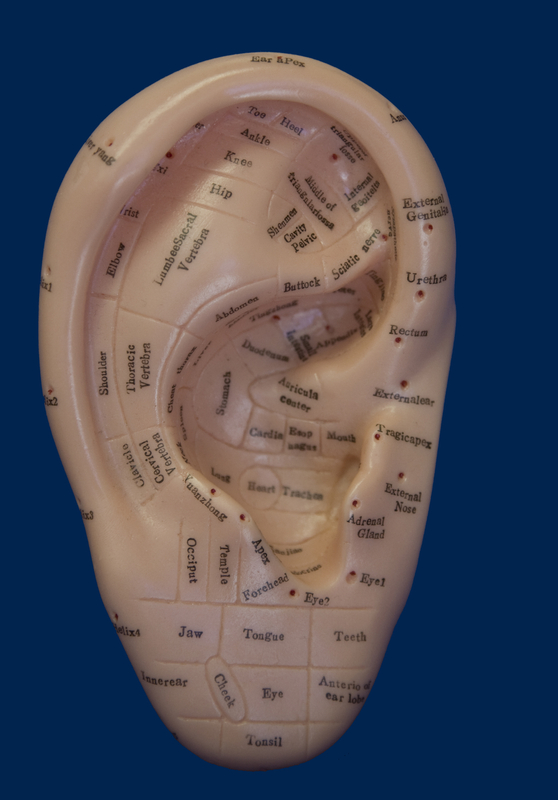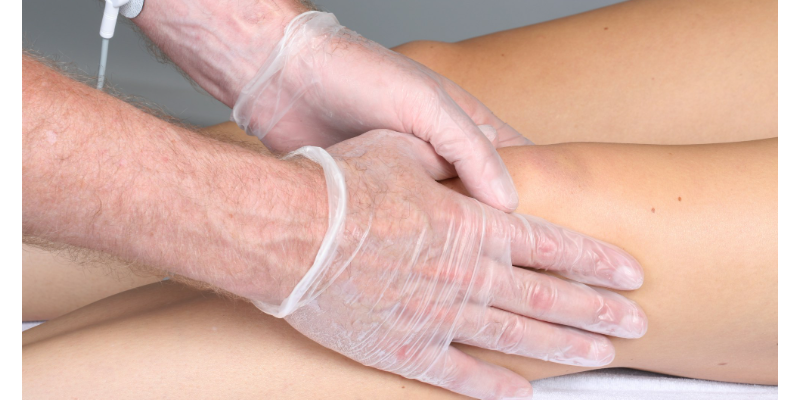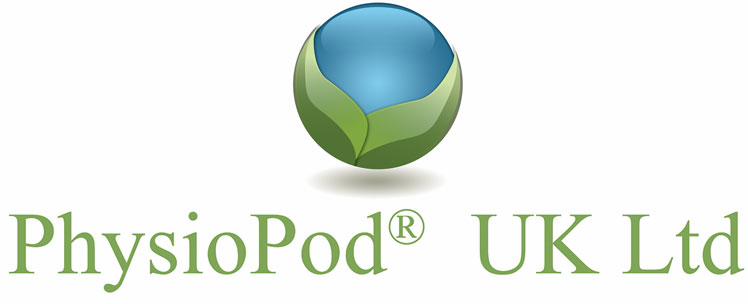Harnessing Auricular Acupuncture and Deep Oscillation for Knee Pain Relief: A Case Study By Ben Neves
In the world of alternative therapies, innovations and intuitive combinations of techniques often yield remarkable results. One such combination I recently explored involves using Auricular Acupuncture alongside Deep Oscillation therapy for treating knee pain—a case that delivered both surprising and extraordinary outcomes.

Clinical Presentation
My patient, a middle-aged woman, presented with persistent arthritic knee discomfort. Over the course of several months, these symptoms had further exacerbated after a gradual onset. She evaluated her pain as "severe pain/very intense" on a subjective scale of 7/10 (refer to the diagram below). Her daily activities were rendered challenging by the discomfort, which was obstructing her mobility.

Clinical reasoning
Although knee pain is frequently alleviated through a variety of conventional and alternative treatments, I opted to pursue a somewhat unconventional approach combining Auricular Acupuncture with Deep Oscillation therapy (DOT) on the ear, followed by a further DOT treatment to the knee.
The efficacy of both modalities independently, notably in the context of pain, osteoarthritis, and rehabilitation, is supported by existing research [1-18].
Auricular acupuncture is founded on the premise that the ear is a microsystem that reflects the entire body. Numerous organs and systems, including joints such as the knee, are associated with specific locations on the ear.

DOT is an internationally patented, proven technology based on the effects of creating an electrostatic field in the tissue of the patient. In contrast to externally applied, mechanical forms of therapy, (e.g. vibration), the therapy effect of DOT takes place in the tissue itself and works through the entire depth of the tissue layers to a depth of 8 cm (skin, connective tissue, subcutaneous fat, muscles, blood and lymph vessels). Easy application is from therapist to patient/client via hygienic, vinyl gloved hands; utilizing all normal massage movements or via circular movements over the tissue with a handheld applicator.
Although DOT is typically applied initially directly to the area of discomfort, I hypothesised, that the therapeutic effects of the treatment could further enhance my clients outcome by first applying it to the acupuncture points on the ear, whilst the ASP needles were in place, before then continuing DOT treatment to the knee joint.
Treatment Protocol

- I employed a Pointoselect device to identify the precise auricular sites that corresponded to the knee in order to initiate the treatment. The electrical conductivity of the epidermis is detected by this device, which results in an increase in the number of overactive acupuncture points.

- I inserted ASP (semi-permanent) needles into the corresponding locations on the ear after identifying these sites. The insertion of these needles is generally rapid and relatively painless, resulting in a subtle, continuous stimulus to the acupuncture points. These are designed to stay in ear points for 2-5 days post treatment for continued results.
- DOT was applied directly over the auricular points at 60 Hz, where the ASP needles were positioned for 5 minutes.
- I then applied Deep Oscillation to the knee, using the two gloved hand method: 200 Hz to 250 Hz for 5 minutes, followed by 60 Hz for 4 minutes, then 14 Hz to 30 Hz for 5 mins.

Frequency Rationale
High: 200-250Hz
To reduce pain, activate the lymphatic network, and break down metabolic waste.
Medium: 25-80 Hz
Ideally suited to aiding microcirculation, specifically between the interstitial spaces promote mobility, flexibility and movement.
At this point, the patient described an immediate sensation of lightness and a reduction in pain at this point, her knee, which had been stiff and painful, felt freer, and she was able to bend it with greater ease, which continued to improve when the deep oscillation was further applied to the knee joint via the gloved hand method..
Result
This treatment approach was continued over the following weeks with consistent follow-up treatments leading to further improvements in pain management and joint function, 1-2/10 (very mild - discomforting to mild).
The patient reported not only a significant reduction in pain but also increased mobility and a decreased reliance on pain medication.
The combination of auricular acupuncture and Deep Oscillation therapy appeared to facilitate the reduction of inflammation and the improvement of local circulation, contributing to the overall reduction in arthritic symptoms.
Continued therapy sessions focused on maintaining these gains, with periodic assessments to adjust treatment as necessary.
Over time, my patient experienced sustained pain relief, improved quality of life, and the ability to engage more comfortably in daily activities. My patient no longer needs to attend my clinic.
Conclusion
References
1. Asher, G. N., Jonas, D. E., Coeytaux, R. R., Winham, S. J., & Loehr, L. R. (2010). Auriculotherapy for pain management: A systematic review and meta-analysis of randomized controlled trials. Journal of Alternative and Complementary Medicine, 16(10), 1097-1108.Romoli, M., Allais, G., Airola, G., Benedetto, C.,
2. Mana, O., & Giacobbe, M. (2014). Ear acupuncture and fMRI: A study on the specificity of auricular points. Neurological Sciences, 35(S1), 189-193.
3. Bolaños F. (2009): Efectividad de las oscilaciones profundas Hivamat personal en la patalogía artrósica de rodilla: Estudio de caso en adultos mayores. Universidad Santa Paula. English: Effectiveness of personal Hivamat deep oscillations in osteoarthritic knee pathology: A case study in older adults.
4. Christian et al (2019): Deep Oscillation Therapy for Lower-Leg Pain - MS,Journal of Sports Medicine and Allied Health Science | Vol. 4 | Issue. 3
5. Christian, McCall E.; Koenig, Riley C.; Winkelmann, Zachary K.; and Games, Kenneth E. (2019) "The Effects of Deep Oscillation Therapy for Individuals with Lower-Leg Pain," Journal of Sports Medicine and Allied Health Sciences: Official Journal of the Ohio Athletic Trainers Association: Vol. 4: Iss. 3, Article 3.DOI: https://doi.org/10.25035/jsmahs.04.03.0 Available at: https://scholarworks.bgsu.edu/jsmahs/vol4/iss3/3
6. Coronados VY, Alba GCJ, Lorenzo GE, et al. Therapy of deep oscillations as a complement to kinesiotherapy in the treatment of gonarthrosis. Rev Cub de Med Fis y Rehab. 2017;9(2):1-14.
7. Dimitrov, N., & Petrov, D. (2019). EFFECTIVENESS OF COMPLEX REHABILITATION WITH DEEP OSCILLATION AND KINESITHERAPY FOR PAIN RELIEF IN PATIENTS WITH GONARTHRITIS. Knowledge International Journal, 26(4), 1071 - 1077.
8. Dimitrov, N., Goycheva, P., & Petrov, D. (2021). ASSESMENT OF THE REHABILITATION PROGRAM FOR PATIENTS WITH KNEE OSTEOARTHRITIS AND DIABETES MELLITUS TYPE 2. Knowledge International Journal, 45(4), 853 - 859. Retrieved from http://ikm.mk/ojs/i
9. Fistetto G, Iannitti T, Capone S, Torricelli F, Palmieri B. Deep Oscillation®: esperienze terapeutico-riabilitative con un nuovo innovativo strumento ad azione elettrostatica [Deep Oscillation: therapeutic-rehabilitative experiences with a new electrostatic device]. Minerva Med. 2011 Aug;102(4):277-88. Italian. PMID: 21968626. https://pubmed.ncbi.nlm.nih.gov/21968626/
10. Koleva Ivet B., Marinov Marin B. IMPACT OF DEEP OSCILLATION IN THE COMPLEX REHABILITATION ALGORITHM FOR PATIENTS AFTER SPINAL NEUROSURGERY - The Eurasian Union of Scientists (ESU) ISSN: 2411-6467DOI: 10.31618/esu.2411-6467.8.53.1
11. Koleva, I. B., Ioshinov, B. R., & Yoshinov, R. D. (2017). Complex Analgesia (Infiltrations and Deep Oscillation) in Patients with Stump Pain and Phantom Pain after Lower Limb Amputation (Double-blind Randomised Controlled Trial of Efficacy). Journal of Advances in Medicine and Medical Research, 22(11), 1-17. https://doi.org/10.9734/JAMMR/2017/34198
12. Koleva1 I. B ET AL (2021) Complex Physical Prevention and Rehabilitation of Cervical Myofascial Pain and Headache, Due to Spine Malposition in Users (Abusers) of Smart Phones DOI: 10.9734/bpi/hmmr/v12/1675F
13. Kolevaa Y.,∗, Yoshinovb B., Nikolovac S. (2014) Impact of deep oscillation in the complex PRM algorithm of pain management - Annals of Physical and Rehabilitation Medicine, Volume 57, n° S1, page e253 (mai 2014), Doi : 10.1016/j.rehab.2014.03.921
14. Kolevaa Y.,∗, Yoshinovb B., Nikolovac S. (2014) Impact of deep oscillation in the complex PRM algorithm of pain management - Annals of Physical and Rehabilitation Medicine, Volume 57, n° S1, page e253 (mai 2014), Doi : 10.1016/j.rehab.2014.03.921
15. Mratskova G., & Elkova, H. (2024). EFFECTS OF MULTIMODAL REHABILITATION PROGRAM INCLUDING THE USE OF DEEP OSCILLATION® THERAPY IN A PATIENT WITH COMBINED PATHOLOGY OF THE ELBOW JOINT. KNOWLEDGE - International Journal , 62(4), 469–475. Retrieved from https://ikm.mk/ojs/index.php/kij/article/view/6618
16. Mratskova G.(2020) Use of Deep Oscillation Therapy in Rehabilitation Program for Patient after Distal Radius Fracture with a Complex Regional Pain Syndrome: A Case Report. Trakia Journal Of Sciences, Vol. 18, Suppl. 1, Pp 187-193, 2020 ISSN 1313-3551 (Onl
17. Petrov, Y., & Mihaylova, M. (2024). APPLICATION OF DEEP OSCILLATION THERAPY IN PATIENTS WITH CERVICAL OSTEOCHONDROSIS: A PILOT STUDY. KNOWLEDGE - International Journal , 62(4), 477–482. Retrieved from http://ikm.mk/ojs/index.php/kij/article/view/6619
18. Zehtindjieva MG, Ioshinov BR, Andonov DR, Ilkov VS, Bayraktarova A. (2013): Deep Oscillation - A Modern Additional Physical Modality For Analgesia In Patients With Back Pain. PRAEMEDICUS 29, 85-90.
More from Ben Neves

Trochanteric Bursitis Treated Effectively With Deep Oscillation

DEEP OSCILLATION® and Acupuncture Relieved Chronic Migraine In Two Sessions


